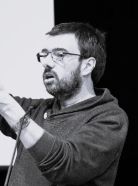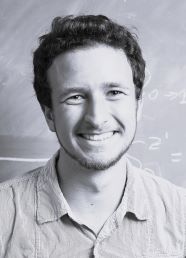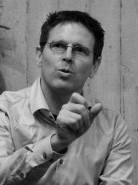ML4Q Concepts
Series #7: Rydberg atoms in tweezer arrays
The ML4Q Concepts seminar series goes into its seventh round focusing on the topic: Rydberg atoms in tweezer arrays: new platform for quantum simulation and computing. The series is organized by Sebastian Hofferberth and David Luitz, University of Bonn, together with Markus Müller, RWTH Aachen and Forschungszentrum Jülich.
The seminars will be online, via zoom. The Zoom link will be sent via the cluster’s mailing lists. If you are not affiliated with ML4Q but would like to participate, please drop a line to the ML4Q office. Suggestions for topics/speaker for follow-up seminar series are always welcome via our (ML4Q-internal) Slack workspace!
Seminar schedule
29 June 2023, 11:00
Hans Peter Büchler
Institute for Theoretical Physics III, University of Stuttgart
Topological phases with Rydberg atoms
Büchler’s research interests lie in the area of quantum mechanical many-particle systems and include cold quantum gases, Rydberg atoms, topological states and their application in Quantum Information Processing. In this work, he uses methods from Solid State Physics, Quantum Optics and quantum information.
Büchler studied physics at ETH Zurich from 1994 onwards and graduated in 1999 with a diploma thesis (Macroscopic Quantum Phenomena in Superconducting Structures) in theoretical physics. In 2003, he received his PhD in theoretical physics under the supervision of Gianni Blatter with a thesis on condensed quantum matter (Phase Transitions in Quantum Condensed Matter). After a postdoctoral position with Peter Zoller at the University of Innsbruck, he became a professor of theoretical physics at the University of Stuttgart in 2007.

Source: https://thierry-lahaye.org/
6 July 2023, 11:00
Thierry Lahaye
CNRS researcher in the quantum optics group of Institut d’Optique in Palaiseau, France
Exploring the physics of XY spin models with arrays of single Rydberg atoms
In this talk, I will discuss quantum simulation of spin models using our Rydberg atom array platform. Using two different Rydberg levels nS and nP that are coupled by the resonant dipole-dipole interaction, we implement the dipolar XY Hamiltonian. I will first describe our quasi-adiabatic preparation of low-energy states of both the ferromagnetic and the antiferromagnetic XY model on a square array, with the observation of long-range order in the ferromagnetic case only [1]. I will then show that, in the same setting, a quantum quench starting from an initial state with all the spins pointing along the equator of the Bloch sphere givers rise to spin-squeezed states, with a squeezing parameter that increases with the atom number in the array [2], with potential applications for quantum metrology.

(c) Dolev Bluvstein
13 July 2023, 14:00
Dolev Bluvstein
Quantum Optics Laboratory (Lukin Group), Harvard University
Neutral atom quantum processors and the error correction frontier
Quantum computers have promise to significantly outperform their classical counterparts at solving certain computational problems. However, current approaches face two major challenges. The first challenge is that quantum systems are fragile, requiring the use of quantum error correction. The second challenge is that, unlike their classical counterparts, quantum devices are often built qubit-by-qubit, requiring multiple control “wires” per qubit. Here we will detail recent advances in digital quantum processing using neutral atom arrays and show that these optical tools are particularly powerful for the realization of quantum error correction. First, a digital processor based on the coherent movement of atoms will be presented. Crucially, this movement-based processor leverages the highly efficient control over atom positioning in order to program complex quantum circuits with only a few classical control channels. Moreover, this processor enables any-to-any connectivity between qubits, enabling unique opportunities in quantum computation; as an example, we utilize the long-range connectivity to make periodic boundary conditions and realize the first toric code on a torus, using 24 qubits. A computational algorithm to optimize qubit routing will be highlighted. Second, we will detail a fivefold improvement in the fidelity of two-qubit Rydberg-mediated gates in neutral atoms. Our method employs fast single-pulse gates based on optimal control, atomic dark states to reduce scattering, and upgrades to Rydberg excitation and atom cooling. With these techniques we realize a 99.5% two-qubit gate fidelity on up to 60 qubits in parallel. Third, we will showcase the realization of fully programmable individual single-qubit rotations using Raman excitation through a 2D acousto-optic deflector, allowing for arbitrary local rotations while still leveraging significant parallelism. The concert of all these tools as well as various experimental upgrades will be discussed, in their application to a new generation of digital processing with neutral atoms, and in particular to realizing large-scale computation with error-corrected, logical qubits.
